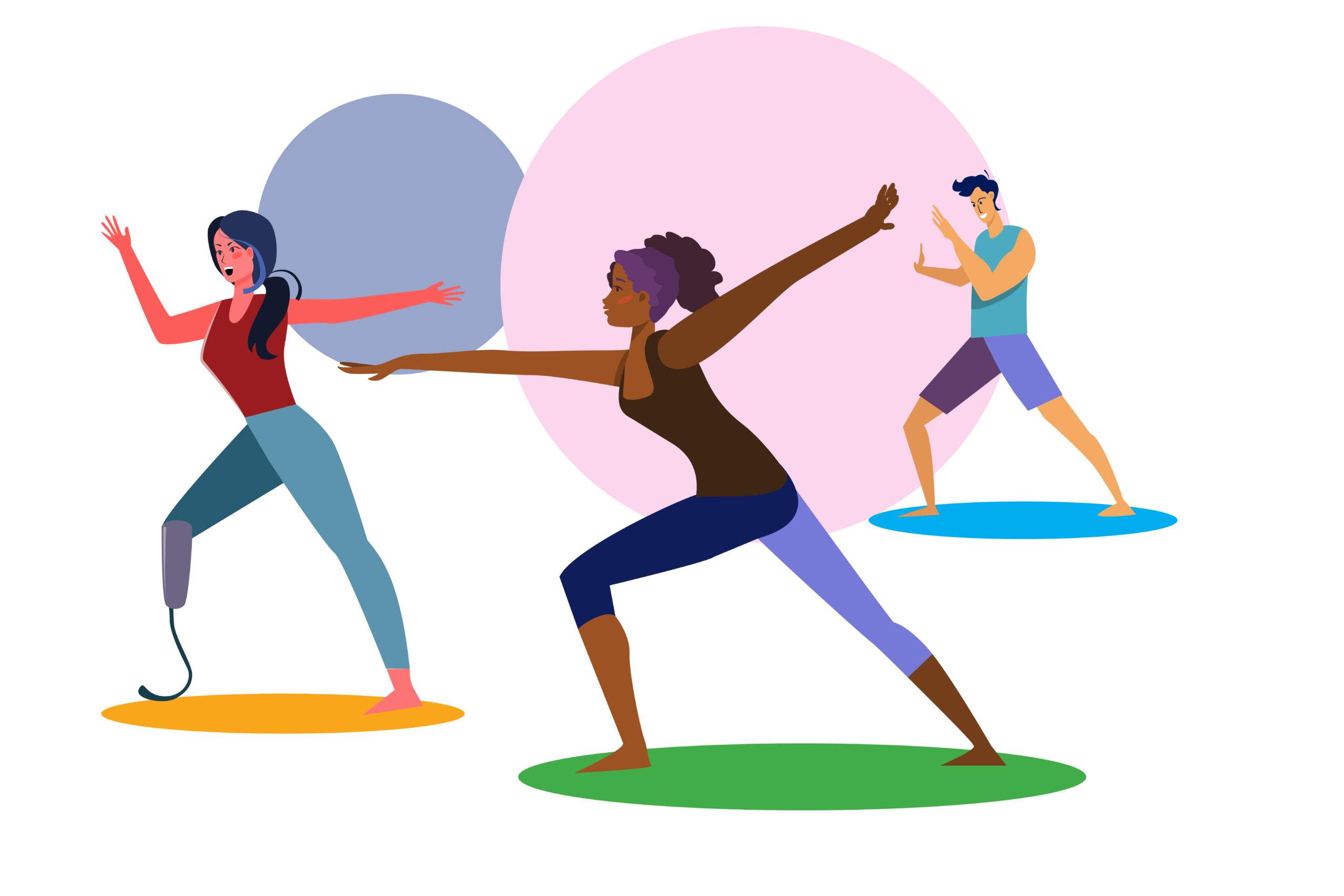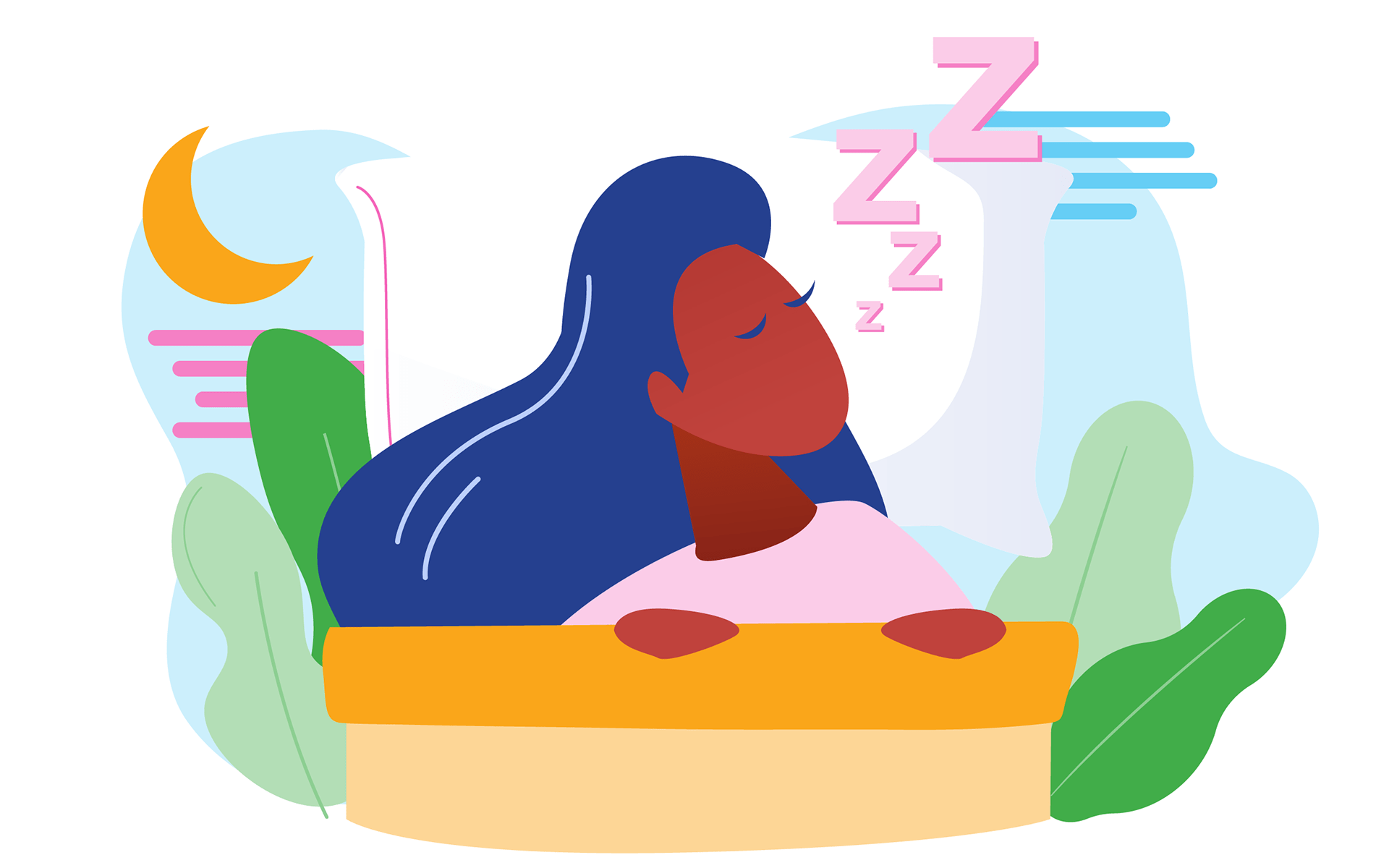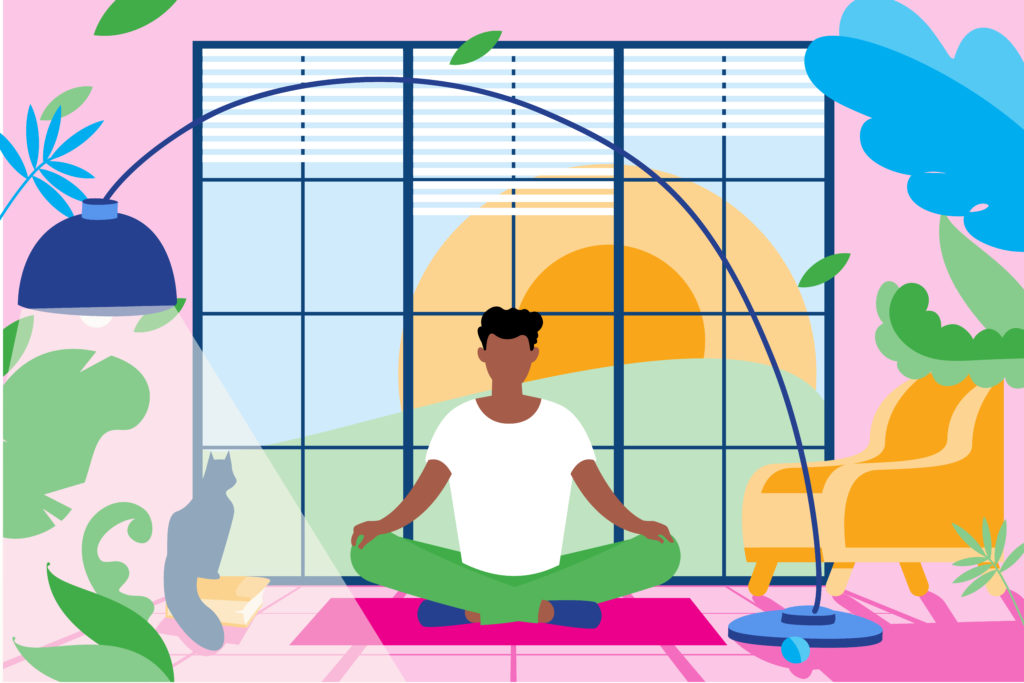
Mindfulness meditation gives us a time in our lives when we can suspend judgment and unleash our natural curiosity about the workings of the mind, approaching our experience with warmth and kindness—to ourselves and others.
Kickstart your journey with our free 4-day Morning Meditation guide, delivering essential insights and guided practices directly to your inbox. Enter your email to get started.
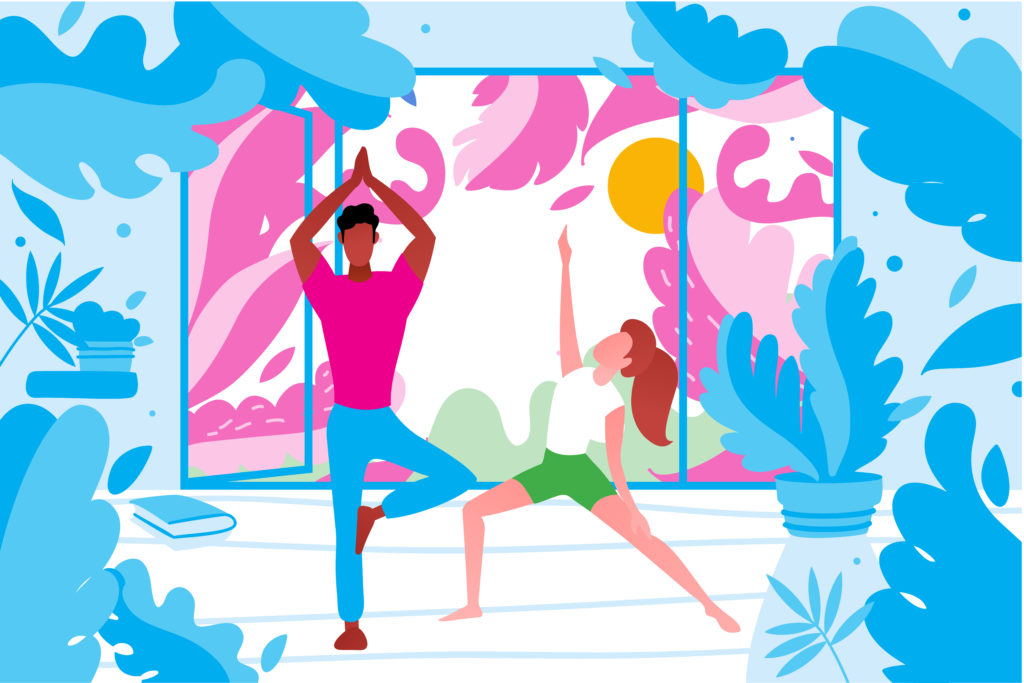
The Benefits of Morning Meditation
While you can reap the benefits of mindfulness meditation any time of day, the morning offers a calm, quiet time to focus on your practice. When we’re mindful, we reduce stress, enhance performance, gain insight and awareness through observing our own mind, and increase our attention to others’ well-being. Here are five reasons to meditate in the morning or otherwise.
- Understand your pain. Pain is a fact of life, but it doesn’t have to rule you. Mindfulness can help you reshape your relationship with mental and physical pain.
- Connect better. Ever find yourself staring blankly at a friend, lover, child, and you’ve no idea what they’re saying? Mindfulness helps you give them your full attention.
- Lower stress. There’s lots of evidence these days that excess stress causes lots of illnesses and makes other illnesses worse. Mindfulness decreases stress.
- Focus your mind. It can be frustrating to have our mind stray off what we’re doing and be pulled in six directions. Meditation hones our innate ability to focus.
- Reduce brain chatter. The nattering, chattering voice in our head seems to never leave us alone. Isn’t it time we gave it a little break?
Frequently Asked Questions About Morning Meditation
1) Is it best to meditate early in the morning?
Some people find the morning to be a good opportunity for practice, before the sounds of the day begin to creep in: the newspaper delivery, the garbage truck, the drip of coffee brewing or bacon beginning to fry.
But we each have our own rhythm and routine. If you are inclined, go ahead and try morning meditation for a week or so. See what happens. Perhaps you’ll fall asleep, or perhaps, wonder of wonders, you may fall awake instead!
There is a kind of early-morning alertness that some of us possess. There are morning people, and there are night people, but in fact these are just stories we tell about ourselves.
So test out your story of not being a morning person, and if after a week or so you still find yourself awakening an hour later with a start and find a little rivulet of drool making its way down your chin, you might think about trying an evening meditation time instead. But be willing to explore, to try, and to see what works for you.
2) Can meditation sharpen your attention when you wake up?
It’s not surprising that meditation would affect attention, since many practices focus on this very skill. And, in fact, researchers have found that meditation helps to counter habituation—the tendency to stop paying attention to new information in our environment. Other studies have found that mindfulness meditation can reduce mind wandering and improve our ability to solve problems.
There’s more good news: Studies have shown that improved attention seems to last up to five years after mindfulness training, again suggesting trait-like changes are possible.
Do these benefits apply to people with attention-deficit disorders, and could meditation possibly supplant drugs like Adderall? We can’t yet say for sure. While there have been some promising small-scale studies, especially with adults, we need larger randomized controlled trials to understand how meditation might mix with other treatments to help both kids and adults manage attention-deficits.
3) What should I do about important thoughts and ideas that arise while I’m meditating first thing in the morning?
Mindfulness teacher Elisha Goldstein says the essential attitude of a meditator is curiosity. Meditation gives us an opportunity to look at what our minds do when we’re paying attention to them. And what the mind often does is wander off. Try to integrate an attitude of playfulness into your practice. Your practice doesn’t need to be rigid and strict—there can be spontaneity and flexibility. So, your mind wanders. See the thought, touch it—say here’s the thought, spend a moment with it. If it’s important, note that you want to come back to it—feel free to say, in your mind, that’s an important thought, I want to remember it. If it’s irrelevant, note that it’s irrelevant. Either way, very gently bring your attention back to your breath. Gentleness is important here, because what we practice and repeat over time becomes a habit. Consider this: What would the days, weeks, and months ahead be like if you were gentle with yourself? What would be different? When your mind wanders off and you quickly yank it back, it’s worthwhile to go back and say what was that thought again? Take note of it, and practice more gently bringing your attention back.
4) I see lights and other trippy images behind my closed eyelids when I meditate. What is that?
Just like pretty much everything that our mind offers up randomly and without being invited, these experiences are simply rising phenomena without substance or meaning. What might be happening is your optic nerve is used to being constantly stimulated and when it’s deprived it serves up its own entertainment (kind of like when your stomach gurgles when you’re hungry).
These sensory phenomena can actually be a support to our practice. We can simply take a stance of observation, watching to see what happens next without knowing. A nonverbal observation task that allows us to stay present and not wander off into thinking. Pretty cool, and you didn’t need to buy an app to find a way to support your practice.
5) When I meditate, I’m not finding relaxation or peace. What should I do?
The challenge (and it is a huge challenge sometimes) is to see if we can be curious about restlessness and difficult emotions, to stay with them and see how they manifest—how discomfort for example rises and falls, ebbs and flows in us as we stay aware of it. Admittedly, there may be pain involved, and that might call for some degree of kindness or self-compassion. Maybe placing a hand on your heart or in some other soothing place, feeling the warmth and kindness in the touch, and treating yourself the way you would treat a good friend. Maybe comforting or soothing yourself, saying a kind word to yourself like “Ouch! This is tough!” or just naming what you’re feeling “Ah! Anger is here. I’m feeling anger.” Oftentimes just assigning a label to feelings mellows the impact on the mind and the body.
We meditate to cultivate a different relationship with our inevitable human suffering, but it isn’t always easy or pleasant. The present moment can take so many forms, including difficult ones, but you can’t be any other place than where you actually are.

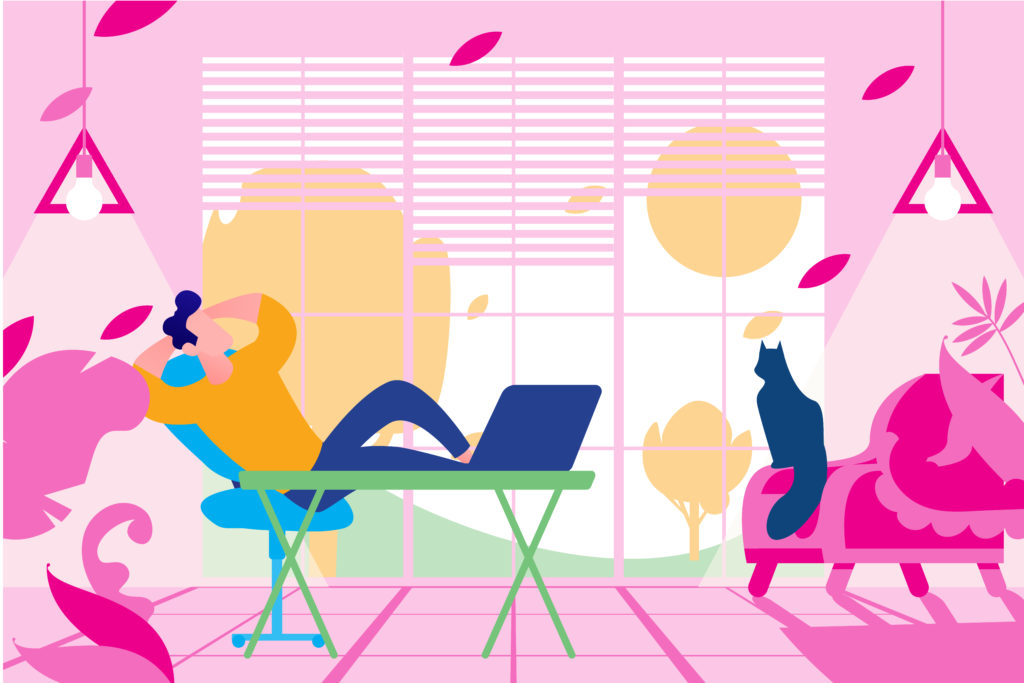
How to Create Your Ultimate Morning Routine
Jon Kabat-Zinn, the founder of Mindfulness-Based Stress Reduction and author of multiple books, is a man that’s busier than most. Here he shares how he makes time for mindfulness in his morning routine. “There’s waking up—dragging yourself around—and then there’s waking up,” Kabat-Zinn says.
Here’s how he adds more mindfulness to his mornings:
- Practice mindful tooth-brushing, showering, and coffee-drinking: We can add mindfulness to tasks we do every morning when we practice them with intention. Brushing your teeth, drinking coffee—it’s all part of developing awareness, and you can build mindful habits around those morning tasks.
- Develop a meditation routine: Kabat-Zinn begins his morning with 40 minutes to an hour of mindful yoga before he settles into meditation. That may not be realistic for all of us, but you can add a quick stretch or even a five-minute meditation session before you jump into your day.
- Check in on yourself: How do you feel this morning? Are you still upset about a fight last night, or worried about an upcoming meeting? What do you want to achieve today? Understanding how you feel before you embark on your day can help you go through your day more mindfully. “Drop in on yourself and rest for a stretch of time,” Kabat-Zinn says. “And then as you go about your daily life, check in. Once an hour, once a minute. Once a day. You decide.”
Tips for Waking Up
- Wake to a pleasant, non-jarring signal or sound, ideally from something that is not your smartphone. Low-key, wake-to-music options can work, too—just be sure you can easily turn off, turn over, cover up, or otherwise block any light-emitting displays.
- Keeping houselights low, if possible, go directly to your practice area. If you’re a person who loves coffee, hot tea, or water first thing, feel free to make your preferred morning beverage to enjoy during your practice.
- Avoid all interaction with complex electronics, digital devices, media (including radio, television, and newspapers)—and ideally, any complex interactions with other people—until your Morning Minutes practice is complete.
- Set a timer for a minimum of three minutes, take a breath, and settle yourself.
- Choose any feel-good activity and enjoy it for the period of time you have chosen, or for as long as desirable or doable.
- On closing, do a brief ideal-day “snapshot” visualization or set intention for the day—or just take three deep breaths.
Try These Mindful Practices to Start Your Day
- First thing on rising, before you do anything else (especially looking at your phone), choose any feel-good activity and just enjoy it for at least three minutes, or for as long as you find it rewarding and doable.
- Avoid all exposure to electronics, media, and other sensory distractions or stressors. No email, texts, social media, or news until your body and mind have had a chance to come gradually and peacefully into their relaxed waking state.
- Try meditation, yoga, stretching, reading poetry or wisdom literature, journaling, stepping outside to see the sunrise, listening to birds through an open window, or playing a musical instrument.
- Set your intentions for the day and visualize how you want it to go or to reflect on the things you are most grateful for.
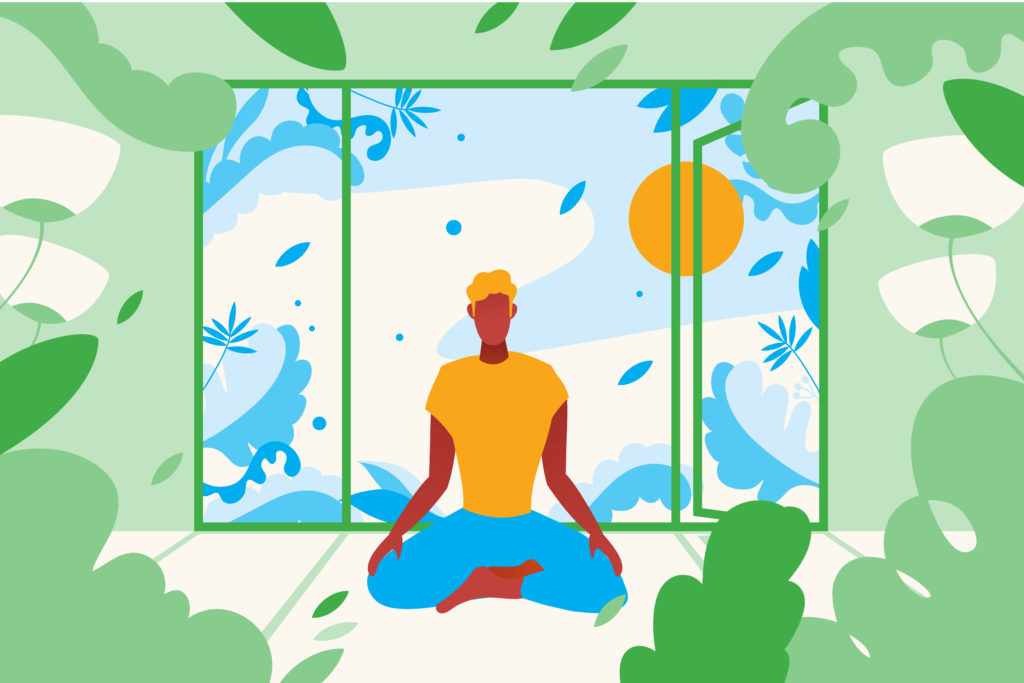
How to Start a Morning Meditation Practice
Meditation is simpler (and harder) than most people think. Read these steps, make sure you’re somewhere where you can relax into this process, set a timer, and give it a shot:
1) Take a seat
Find a place to sit that feels calm and quiet to you.
2) Set a time limit
If you’re just beginning, it can help to choose a short time, such as five or 10 minutes.
3) Notice your body
You can sit in a chair with your feet on the floor, you can sit loosely cross-legged, you can kneel—all are fine. Just make sure you are stable and in a position you can stay in for a while.
4) Feel your breath
Follow the sensation of your breath as it goes in and as it goes out.
5) Notice when your mind has wandered
Inevitably, your attention will leave the breath and wander to other places. When you get around to noticing that your mind has wandered—in a few seconds, a minute, five minutes—simply return your attention to the breath.
6) Be kind to your wandering mind
Don’t judge yourself or obsess over the content of the thoughts you find yourself lost in. Just come back.
7) Close with kindness
When you’re ready, gently lift your gaze (if your eyes are closed, open them). Take a moment and notice any sounds in the environment. Notice how your body feels right now. Notice your thoughts and emotions.
That’s it! That’s the practice. You go away, you come back, and you try to do it as kindly as possible.
How to Make Mindfulness a Habit
It’s estimated that 95% of our behavior runs on autopilot. That’s because neural networks underlie all of our habits, reducing our millions of sensory inputs per second into manageable shortcuts so we can function in this crazy world. These default brain signals are so efficient that they often cause us to relapse into old behaviors before we remember what we meant to do instead.
Mindfulness is the exact opposite of these default processes. It’s executive control rather than autopilot, and enables intentional actions, willpower, and decisions. But that takes practice. The more we activate the intentional brain, the stronger it gets. Every time we do something deliberate and new, we stimulate neuroplasticity, activating our grey matter, which is full of newly sprouted neurons that have not yet been groomed for “autopilot” brain.
But here’s the problem. While our intentional brain knows what is best for us, our autopilot brain causes us to shortcut our way through life. So how can we trigger ourselves to be mindful when we need it most? This is where the notion of “behavior design” comes in. It’s a way to put your intentional brain in the driver’s seat. There are two ways to do that—first, slowing down the autopilot brain by putting obstacles in its way, and second, removing obstacles in the path of the intentional brain, so it can gain control.
Shifting the balance to give your intentional brain more power takes some work, though. Here are some ways to get started.
- Put meditation reminders around you. If you intend to do some yoga or to meditate, put your yoga mat or your meditation cushion in the middle of your floor so you can’t miss it as you walk by.
- Refresh your reminders regularly. Say you decide to use sticky notes to remind yourself of a new intention. That might work for about a week, but then your autopilot brain and old habits take over again. Try writing new notes to yourself; add variety or make them funny. That way they’ll stick with you longer.
- Create new patterns. You could try a series of “If this, then that” messages to create easy reminders to shift into the intentional brain. For instance, you might come up with, “If office door, then deep breath,” as a way to shift into mindfulness as you are about to start your workday. Or, “If phone rings, take a breath before answering.” Each intentional action to shift into mindfulness will strengthen your intentional brain.
Follow These Steps to Add Meditation to Your Morning Routine
Awareness of your breath can serve as a steady basis for awareness in all you do. Explore this six-step practice to make mindfulness part of your daily routine:
- First, select a suitable place for your regular meditation. It can be wherever you can sit easily with minimal disturbance: a corner of your bedroom or any other quiet spot in your home. Place a meditation cushion or chair there for your use. Arrange what is around so that you are reminded of your meditative purpose, so that it feels like a peaceful space. Let yourself enjoy creating this space for yourself.
- Then, establish a regular time to practice that suits your schedule and temperament. If you are a morning person, experiment with a sitting before breakfast. If evening fits your temperament or schedule better, try that first. Begin with sitting ten or 20 minutes at a time. Later you can sit longer or more frequently. Daily meditation can become like bathing or toothbrushing. It can bring a regular cleansing and calming to your heart and mind.
- Find a posture on the chair or cushion in which you can easily sit erect without being rigid. Let your body be firmly planted on the earth, your hands resting easily, your heart soft, your eyes closed gently. At first feel your body and consciously soften any obvious tension. Let go of any habitual thoughts or plans.
- Bring your attention to feel the sensations of your breathing. Take a few deep breaths to sense where you can feel the breath most easily, as coolness or tingling in the nostrils or throat, as movement of the chest, or rise and fall of the belly. Then let your breath be natural. Feel the sensations of your natural breathing very carefully, relaxing into each breath as you feel it, noticing how the soft sensations of breathing come and go with the changing breath.
- After a few breaths, your mind will probably wander. When you notice this, no matter how long or short a time you have been away, simply come back to the next breath. Before you return, you can mindfully acknowledge where you have gone with a soft word in the back of your mind, such as “thinking,” “wandering,” “hearing,” “itching.” After softly and silently naming to yourself where your attention has been, gently and directly return to feel the next breath. Later on in your meditation you will be able to work mindfully with all the places your mind wanders to, but for initial training, one word of acknowledgement and a simple return to breath is best.
- As you sit, let the breath change rhythms naturally, allowing it to be short, long, fast, slow, rough, or easy. Calm yourself by relaxing into the breath. When your breath becomes soft, let your attention become gentle and careful, as soft as the breath itself.
How Mindfulness Helps You Find Time
Mindfulness offers practical tools to help take back your time, get off the hamster wheel, and check-in honestly with yourself. By taking simple, five-minute mindful breaks, we can become more cognizant of our thoughts, body sensations, emotions, behaviors, and habits. We can more easily recognize when our body is in panic mode, or when stress has our shoulders up and our stomach in knots. We can pause to take a few deep breaths, allow the brain time to register that there is no immediate threat, which then allows our body to gradually calm down. It’s from this place of calm and stable attention that we’re able to think more clearly and choose our responses, rather than react out of impulse.
When we choose to practice mindfulness, we open up space for intentional planning, goal setting, and creative thought. When we choose mindfulness, we choose to no longer be exhausted and overwhelmed by putting out fires (in our mind, anyway). We choose to reflect on our values, guided by clarity about our strengths as well as the areas where we’re ready to grow. We notice what fuels our energy, what depletes us, what to delegate, and what to focus on. We have the energy to step out of our comfort zones, challenge ourselves, and overcome barriers to achieve success in the areas that matter most to us.
Connect in the morning: Before you dive into the to-dos of your daily routine, take five minutes to connect with your breath, and notice what your body feels like. What your breath is doing. How your shoulders feel.
Create a habit: If you like, use an app (here are some free options) or download a guided meditation to get started. Carve out five minutes every day to sit comfortably and notice your breath moving in and out. If five minutes seems like too much, start with one minute. The goal is to simply make a habit of choosing to practice. Figure out where, when, how, and why you will carve out those minutes—knowing your motivation will help encourage you to continue.
Add mindful breaks to transition moments: Even quicker than your daily morning meditation, identify opportunities throughout your day to pause and bring our attention to what is happening in the moment. We can take a mindful break anytime, anywhere—during our commute, at our desk at work after sending an email, or whenever there’s a transition moment. For example, here’s how you could take a mindful break while drinking your coffee or tea.
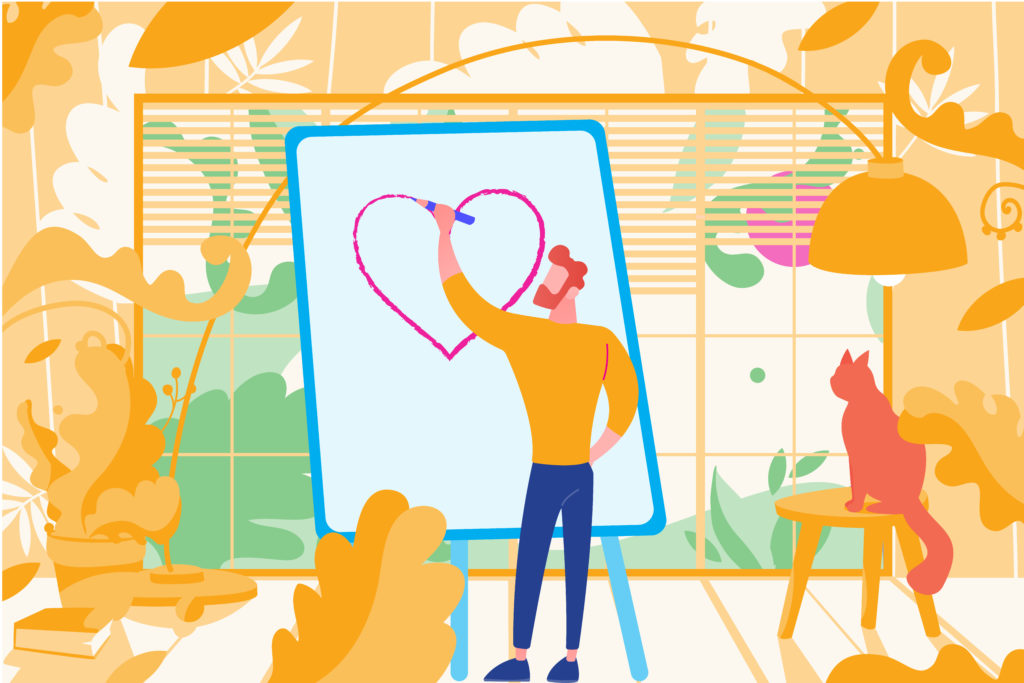
Guided Morning Meditations to Start Your Day
A 5-Minute Guided Gratitude Practice
Savor the Moment by Tapping into Your Senses—Elaine Smookler
- Use the breath to anchor yourself in the present moment. Our minds are always so easily pulled to busyness. Bring particular attention to feeling the breath, or something in the body, as you bring your shoulders down and orient your attention toward gratitude.
- Next, bring to mind a sight you are grateful for. Move through your senses, and find one thing to start with that you appreciate that comes to you from the world of sight, if you have this available. It could be a color…a shadow…a shape…a movement. Remember, it will never be like this again. What do you see right now, and can you feel grateful that you get to see this, whatever it is?
- Now, shift to a scent you appreciate. As you continue to work with your senses, now take time to tune in with appreciation to an aroma. What do you notice? What about that glorious or interesting or subtle smell is making you smile? It could be gratitude for something familiar: a scent that brings comfort, upliftment; or maybe it’s something you’ve never smelled before, and it just piques your curiosity, ignites you, enlivens you.
- Moving on, tune into any sounds around you. Allowing the world of smell to gently recede into the background, on an in-breath, shift your attention to your ears and the world of sound. Maybe notice what it feels like to really listen. How many sounds can you notice, and can you feel grateful that you’re able to experience sound, if you are? What can you notice about these sounds—far away? close? Perhaps you could play a piece of music that brings you joy, and have gratitude that it’s so available? Or maybe it’s the sound of children laughing, the sound of loved ones breathing, the sound of the beating of your own heart.
- The world of touch and texture beckons us next. We find so much to be grateful for in touch! If there’s someone near who you can hug or who can hug you, notice how this makes you feel filled with gratitude for the joy of human contact. Or perhaps you have a beautiful pet that you can stroke and cuddle, or some lovely material with a texture that feels warm to the touch, soft, evocative. Let your senses ignite your gratitude! There’s so much to be appreciative of.
- Shift to noticing and appreciating objects around you. Now take a moment to look around: Look down, look up, and from side to side. Appreciate how much effort must have gone into anything at all you own or use. Someone conceived of the need and many people worked on the details of the design. Much care even went into the packaging to deliver your item to you safely. What do you feel when you let yourself be grateful that all that talent went into making your life a little easier?
- As you end this practice, carry this attitude of gratitude with you. One last little grateful tip: Why not offer your thanks to each person who does anything at all for you today? Even if it is their job to help you? When you’re grateful, when you let your heart open up and be filled with appreciation, notice how being grateful makes you feel.
- Close with gratitude. I’m so grateful that you tuned in to this gratitude practice, and I appreciate your time, your effort, and your energy to be present, awake, and alive to your precious life. Have a beautiful day.
A 10-Minute Full Body Scan Meditation
A Guided Body Scan Practice—Tara Healey
- As you are lying on whatever surface you’re on, notice what it feels like to be lying there. Noticing the sensations present in this moment, noticing temperature, noticing points of contact with the body and the surface, noticing the rise and the fall of the abdomen. Allowing the body to rest in this position and noticing sensations as you breathe in and as you breathe out.
- Left foot and leg: Feeling the air move in and out of your body, let’s begin by bringing attention to the toes of your left foot. With the in-breath, noticing the sensations present or lack of sensation. And then with an out-breath, letting go of the toes and move your attention to the bottom of the left foot, including the heel touching the floor. Noticing all the sensations present in that region of the body, also notice how lack of sensation is something the mind can be aware of. Move on to the top of your left foot and ankle, noticing sensation. Now moving to the lower leg, knee, thigh, and hip on the left side of the body.
- Right foot and leg: Moving awareness, now, to the toes of the right foot, the bottom of the right foot, including the heel touching the floor. Bringing awareness to the sensations present in that part of the body. Moving on to the top of your right foot and ankle and scanning that region with awareness, noticing sensations present or lack of sensation. Now move into the lower leg, knee, thigh, and hip on the right side of the body.
- Pelvis: Bringing awareness now to the pelvic region, notice sensations present or lack of sensation.
- Lower back and abdomen: Bringing awareness to the lower back and abdomen, aware of what’s there, without judgment or assessment, simply noticing with awareness.
- Upper back, ribs, and chest: Continuing to scan the back, the rib cage, and chest.
- Shoulders: Moving now to the shoulder blades and shoulders, noticing what is present in those regions of the body.
- Fingers and hands: From here, go to the fingers and the hands, the left and right together. Tuning into the fingers, thumbs, palms, back of the hands, wrists, noticing what’s there, noticing sensations present in the hands and the fingers.
- Wrists and arms: Now moving awareness to the wrists, forearms, elbows, upper arms, and shoulders, and noticing what sensations are present in those regions of the body. On an out-breath, let go of the whole of the arms and the hands.
- Neck and throat: Moving now to the neck and the throat, noticing what is there or not there.
- Head: Moving on to the head and face, and scanning with awareness the jaw, and the chin, the lips, the teeth, and gums, roof of the mouth, tongue, the back of the throat, the cheeks, and the nose. Feeling the air moving in and out of the nose. Then bringing awareness to the ears, the eyes, the eyelids, eyebrows, forehead, temples, and scalp, holding the whole of that region with awareness.
- Breath: Now stay in the present moment with the breath flowing in and out of the body, simply awake to whatever arises and predominates in your field of awareness at any given moment. And this may include thoughts or feelings, sensations, sounds, the breath, stillness, and silence. Be with whatever comes up in the same way you were with the scan.
- Notice how you may tend to react to impulses, thoughts, memories, and worries: Let yourself purposefully observe them without rejecting or pursuing. Practice simply seeing and letting go, seeing and letting go. No agenda other than to be present and awake.
- Closing: In a moment, you’ll hear the sound of the chimes and move the awareness from the body to the sound. And as you follow the last sound to the end, gradually wiggle the toes and move the feet and stretch in whatever way you like. Coming back into the room, fully awake and fully present. As we bring this practice to a close, may we be peaceful and at ease, may our hearts be soft and open, may we be safe and protected, and our bodies healthy and strong. And for all of those known and unknown to us, may they be peaceful and at ease, may their hearts be soft and open, may they be safe and protected and their bodies healthy and strong. May the merit of this practice be for the benefit of all beings.
A 30-Minute Meditation for Resting In Awareness
A Meditation for Resting in Awareness—Jon Kabat-Zinn
- Through our mindfulness practice, we have been cultivating an awareness that can become more and more stable and vivid. And this awareness can be either narrow or broad. Depending on the circumstances, it can recognize and embrace seeing, hearing, smelling, tasting, and touching, as well as those activities of mind we call thinking and feeling.
- So in this moment, resting in awareness, perhaps at first allowing the field of awareness to feature the soundscape. Resting in hearing, being the hearing, without necessarily creating any distance between you and what is being heard. But simply hearing. Being the hearing right now, in this moment.
- If there are thoughts that make their way in, let them be known because awareness can include the knowing of thought. And expand the field of awareness whenever you care to, to include the air caressing the skin, the air that is the breath, the air that carries sound. Rest in the awareness of the air and the breath again through the sensations in the body, since it is only through the senses, including mind, that we can know anything. And we can naturally allow a field of awareness to include of course, not just the sensations associated with breathing or the touch of the air on the skin, but any sensations in the body right here as we sit.
- In this moment, with the field of awareness expanded this far, we have sounds and the spaces between sounds, we have the breath and we have the air, and we have sensations in the body. That’s a lot, and it is all happening in this one moment. And it’s not separate, although we can isolate any feature of it. So just allow it all to be present without separation in this moment, and rest in awareness of the experiencing of it, of it all. Sitting, breathing, feeling, hearing, knowing, thinking. Allow the field of awareness to expand even further to include thought, the thought stream, the bubbles of thought. And any emotional currents, eddies, or whirlpools that may arise in the mind or in the heart, accompanied or unaccompanied by images and thoughts, memories or fantasies. Just allow yourself to rest in this awareness, this bigger basket that holds it all.
- And now in one last jump, let’s allow the field of awareness to expand infinitely. Allow the mind and the heart to be boundless, hugely spacious, and as big as the sky, with no beginning and no end, no boundary, no circumference, no periphery. No center. Rather than focusing on anything in particular, just allow the quality of our awareness to be choiceless. Rest in the non-conceptual knowing quality of mind itself. Not seeking out anything, not pursuing anything, not rejecting anything, and not featuring anything, but bring like an electromagnetic field so to speak, that would instantly know any perturbation any movement whatsoever that would arise within it.
- If in the next moment, sensation arises in your lower back or in your knee and predominates in the field of awareness for a moment, let that be felt, seen, known and neither pushed away nor pursued, condemned nor extolled. Awareness functions as an open, empty, spacious mirror, empty and full, able to contain anything and need nothing to complete itself. Undisturbed, imperturbable, never not here. Like the sun always shining even when clouds obscure it. And even if we become irritated or vexed, this boundless and accepting field of awareness embraces irritation and vexation, grief, joy. Anything and everything: pain, discomfort, agitation, boredom, depression, sadness.
- If thoughts arise, they are met with mindfulness. Of course if you get lost in thought—that can happen very easily—you may be featuring some object into the field of awareness. Narrow your awareness down and re-establish the stability of mind, then allow it to expand out again to whatever degree you like: either stepwise in the way that we’ve just done or jumping straight to choiceless awareness. Awareness is never not here, it’s always available. Just sit in the vast open field of heartful awareness, resting here with nothing special happening. Simply notice life expressing itself. And in the remaining few moments of this sitting if you care to come back to the breath, let go of the vast spaciousness for a moment and feature the breath in your awareness once again. Or if you care to simply continue dwelling in choiceless awareness, then of course. And in the spirit of this practice, it’s your choiceless choice.
- Rest here until you’re ready, and keep in mind that this pristine open spaciousness of heart and mind is available to you in any and every moment of your life.

Easy Morning Rituals to Jumpstart Your Day
Meditating may not be something that you want to do first thing in the morning. And that’s OK. There are several other ways you can bring mindfulness into your morning routine. As soon as you open your eyes in the morning, tune in to your body and breath. Allow yourself to pause in the delightful transition between dreaming and waking.
Wake Up: Mindful Movement Practice
- Rise: Gently roll over to one side and rise slowly, pausing in each transition to notice your breath and feel your body.
- Attend to Your Needs: Then, go do what you need to do: bathroom, wash face, brush teeth…and return to your bedside.
- Single Knee to Chest: This movement warms up the lower back and hips. Lie down next to your bed, on your back with your legs straight, arms straight, palms on the ground, and head facing the ceiling. As you inhale slowly, bring your right knee up toward your chest. Grab your knee with both hands and pull it into your chest. As you exhale, switch legs and then inhale and bring the left leg toward your chest and repeat. Repeat for 3-5 breaths.
- Dynamic Bridge: This movement warms up the spine and helps to relieve any tension accumulated in the spine during sleep. Place your arms flat on the ground by your sides a few inches away from your body, with your palms facing down. Place both feet on the floor under your bent knees. Make sure your back is flat and your body feels centered and balanced. Then, as you inhale, lift your hips up toward the ceiling, creating a straight line from your knees, down your thighs, and to your chest. Exhale and lower your hips back to the ground so that the small of your back and your hips touch the ground together. Repeat 3-5 times.
- Cat/Cow: This movement continues to warm up the spine. Slowly bring your knees to your chest and gently roll over to your side. Then move onto all fours: Place your hands on the ground beneath your shoulders and your knees on the ground beneath your hips. Keep your back straight and your head forward. As you inhale, gently drop your belly toward the floor. Lift your chest and look forward, arching your spine slightly. As you exhale, bring your face toward your navel while doming your upper spine, rounding the top of your back. Repeat for 3-5 breaths.
- Dynamic Mountain: This movement gets the blood flowing while warming up your upper body. Bring yourself to a standing position with your feet hip-width apart. As you inhale, bring your arms forward and up toward the ceiling. As you exhale, turn your palms out and bring your arms back down to your sides. Repeat for 3-5 breaths.
- Side Sways: This movement invigorates your entire body. As you inhale, reach your arms up. As you exhale, turn your right palm outward and bend to the right, bringing your right hand down to your side and arching your left hand over your head. Inhale and rise back up to the center. Exhale and repeat on the left side. Repeat for 3-5 breaths.
- Mindful Mountain: This movement allows you to tune in to your body. Bring your hands to your sides and stand tall, yet relaxed. Take a moment to pause in mountain pose. Notice the physical sensations in your body: your heart beating, coolness or heat rising, tingling or prickling in your feet or hands, soreness or achiness. Observe these sensations without judging them.
- Seated Mindfulness Meditation: Sit on a chair in your bedroom or on the side of your bed with your feet on the ground. Rest your hands on your thighs. Place your attention on the sensation of breathing and count to five as you inhale and five as you exhale. After a few minutes, relax from counting your breath and pause in stillness for a few more minutes, allowing your natural breath to return. Simply experience being aware of your breath and your body.
How to Be Mindful With a Cup of Tea
Bringing mindfulness to simple activities like drinking tea or coffee in the morning trains us to direct attention consciously. We might think we choose what we’re paying attention to, but in reality most of us are driven by habit and impulse. By deliberately choosing to attend to an activity, we slow things down and let ourselves become aware of the process of attending and perhaps how little control we usually have over it. We might notice the repeated wandering of the mind as we attempt to stay with what’s happening right now.
- Pay attention to the sound of the water heating and boiling in the kettle. Hear its bubbling and gurgling. Can you see wisps of steam coming from the spout? Does the kettle subtly shake from the movement of the water inside? Be open to your senses, rather than try to analyze what’s happening.
- Notice the feeling of being in your environment: your bottom’s contact with the chair or the floor, if you’re sitting down; the weight of your feet on the ground, if you’re standing.
- Pouring the tea, watch the colour of the water change as it meets the teabag. Be interested in the transformation from clear water to tea, and the tinkling of liquid as it fills the cup. When your mind wanders into thought, as it probably will, gently return your attention to sensing.
- Lifting the teabag out with a spoon, feel the touch of the handle against your fingers, and the weight of the bag dropping away as you tip it into the bin. Let yourself hear any related sounds, such as the opening and closing of the bin lid. Notice any tendency to do this on autopilot, and come back to present-moment sensing when you find you’ve drifted to distraction.
- If you take milk and sugar, be interested in how you feel as you reach for and add these ingredients to the brew. Do you really want them? How do you know?
- Notice the warming of the cup that contains the hot liquid. How do your hands feel as you hold it?
- Now, bring the cup to your lips. Be interested in how your hand and arm know how to move in this direction without you having to tell them consciously what to do.
- Take a sip of tea. Rather than gulping it down, see if you can let the taste tickle your tongue. Perhaps gently move the liquid around your mouth. Savor the taste—is it pleasant? Or perhaps you’d prefer it stronger or weaker? You don’t have to do anything about it (unless you choose to). Just be aware of your sensations and the liking or disliking of them. If there are thoughts, let them enter into and then pass through your mind without following them. Try to stay with the tasting. Notice without judgement any desire to rush the drinking, and any impatience that comes.
- When you decide to swallow the tea, notice how that decision is made. Is it a conscious choice, or does it happen automatically? Stay present to the swallowing, the reflex movements in the back of the mouth and the throat, the trickle of liquid down into the stomach. How does it feel to be swallowing?
- Notice how the liquid seems to disappear. Is there a point when the tea stops being separate from you? When and how do you recognize that moment?
- Pause now, noticing any feelings of irritation, or thoughts such as: Hurry up, I’ve got better things to do. Or perhaps a sense of peace or stillness enters you. If so, where do you feel it? Is it changing from moment to moment, or staying the same? Maybe there’s something else going on in your mind and body, perhaps unrelated to the tea-drinking, pulling you into thoughts of the past or the future. If so, just notice it. Whatever comes up in your experience is okay from the perspective of meditation—there’s no right or wrong thing to notice. Bring gentle awareness to whatever emerges. Becoming conscious of how much the mind wanders is a sign of growing awareness.
- Take a look around you, opening your eyes to your surroundings without buying into evaluations about them. Just be aware of any thoughts or feelings that come up.
- Now, return your attention to the cup of tea in your hand. (Has the temperature dropped?) Watch as you decide when to begin the process of taking another sip. Return to step seven, and continue drinking the tea until the cup is empty, or you decide to stop drinking. If the latter, be curious about what is prompting that decision. Has the tea gone cold, has the taste changed, is there an impulse to get on with your next activity? (If the latter, what does that feel like? Is there a place in your body where you feel it most strongly?) Whatever you choose to do in each moment, try to watch the experience from an engaged observer’s perspective.
- You don’t have to follow these steps like a strict to-do list. The key is to open yourself to the spirit of the practice, sensing with gentle precision what’s happening, moment by moment, and coming back to sensing whenever you notice you’ve drifted into thought.
A Walking Meditation to Connect with Your Senses
Starting your day with an intentional morning walk can be the key to bringing calm awareness, as you very simply turn your attention to what the body is experiencing, as you bring your awareness to feeling your feet as you walk. This morning walk can be done on the way to your car, in a park, or even as you’re walking down a hallway. All it takes is being awake to what you notice while you’re walking.
- Choose a foot to start with. Pick it up, move it through space, and gently place it on the ground, feeling the sensations of each part of this process from heel to toe. So, picking the foot up, making a choice, picking a foot up, lifting it, moving it through space, feeling it touching down from heel to toe.
- Walk with intention. We’re so used to walking in what we call automatic pilot, basically being tuned out and just letting the body go. You may notice that this feels a little strange to be so intentional about walking. That’s okay. This intention that you’re bringing is a way for you to reconnect with the present moment and what you’re feeling right now.
- Let yourself notice. Notice as much as you can about the feel of picking your foot up, moving through space, and gently placing it down. I get most of us are so used to walking, when we first bring our attention to it, we might even feel a little wobbly. It’s okay: this is normal, and part of what it feels like to wake up and actively notice the details of what we are doing.
- Focus your attention. Focus on the feeling of your feet making contact with the ground right now. Can you notice a difference between thinking about your feet and feeling them making contact with the floor or the earth? Can you let yourself experience what it’s like to be grounded and connected as you make a conscious choice to be present for this walk?
- Feel your surroundings. If you’ve chosen to walk outside, allow yourself to feel the impact of the air on your skin. What do you notice? Is it warm or cool? Is the air damp or dry? Allow yourself to feel it.
- Notice when thoughts take over. You may notice how quickly your attention is drawn to your thoughts, whether it’s thoughts of your day, list making, maybe you’re running an old conversation or story over and over in your mind. Once you notice your thoughts trying to hijack your walk, you may also notice that being lost in thought makes it more difficult to connect with your senses. You probably will notice that you find it harder to hear what’s going on in your environment, harder to smell anything, or taste anything. Thoughts are that powerful. So, when you know the thoughts are pulling you away, just notice that this is what’s happening, smile, and then you can gently and kindly choose to redirect your attention back to your felt senses and even more particularly, back to the feeling of your feet walking. Come back to this experience of the senses and the feet over and over throughout your walk.
- Let yourself experience your surroundings. What do you notice about the weather? Do you have an opinion about it? What happens if you just experience that weather is here, noticing the qualities of the weather, and how you’re experiencing it on the skin or in the body? What happens when you let yourself notice the sounds around you? What do you notice about the smells around you? Can you experience these sensory qualities as the symphony of the world?
- The smell of the world: noticing pungent, acrid, sweet, sour, fresh, earthy. Maybe you can notice sounds as high-pitched, low hums, loud, or soft. How much can you allow yourself to take in the world in the minutest detail as your senses experience what’s here, without adding the layer of judgment on it about how you feel about it? Just for now, see what you’re able to do as you take in the raw data of the world around you—experience it in this morning walk.
- Pause now and then. Another way you might heighten the sensory experience of this walk is, every once in a while, stop right in your tracks if you’re able and it’s appropriate, and notice in a very specific way what it feels like to be grounded as you feel your feet making contact with the earth or the floor. Maybe take a moment to choose a particular thing to experience through the eyes, focusing on color, shape, texture.
- Let your nose have a big sniff in and intentionally smell the air. Redirect your attention to your ears and hear the world right now. Can you hold everything you’re noticing lightly, and just let it be part of your environment while you experience it? You don’t have to judge it, or change it, or do anything about it. Just be here for you right now and then when you’re ready, make a choice to select which foot you’ll begin with and start your walk again.
- Find your pace. Walking, noticing which foot is moving as you pick it up, move it through space, gently place it down feeling the foot making contact with the earth. Although it might help to begin by practicing going slowly, once you have learned to be present to walking in this new way, there’s no reason you can’t move more quickly. Find whatever pace allows you to stay present while you’re experiencing.
- Try aimless wandering. You might want to use this morning wake-up walk to take you to work, or any particular destination. But if it feels safe to do so, it can also be wonderful to allow yourself to do an aimless walk. Maybe setting a timer, perhaps 15 minutes, and allowing your feet to take you wherever they want to go, staying present to your ever-changing environment without having a goal as your destination. Noticing what it feels like to reconnect to inner instincts that show up as everything starts to quiet a bit, as you heighten your senses with this morning walk. Noticing over and over as the attention is drawn to other things, particularly thinking.
- Bringing your attention back to your feet over and over can be the greatest help to reconnecting with the present moment as you let your felt senses and the feeling of your feet touching the ground bring you back, right here, right now, coming back over and over and over. At the end of your walk, notice how you feel, check in with each one of your senses. What are you aware of right now, having spent this time bringing attention to the sensory experiences? What do you notice now about your mood? Notice what it feels like to inhabit your body and be awake to your precious life.
Read more
Getting Started with Mindful Movement
Riding a bike, lifting weights, sweating it out on a treadmill—each can be a mindfulness practice. Whatever the physical activity, instead of simply working out to master a skill or improve your condition, you can move and breathe in a way that shifts you from feeling busy and distracted to feeling strong and capable.
Read More
The Ultimate Guide to Mindfulness for Sleep
Sufficient sleep heals our bodies and minds, but for many reasons sleep doesn’t always come easily. Mindfulness practices and habits can help us fall asleep and stay asleep. Consult our guide to find tips for meditation, movement, and mindfulness practices to ease into sleep.
Read More
A Guide to Practicing Self-Care with Mindfulness
Making sure our own needs are met is as important as taking care of those we love most. When turning your attention toward yourself feels challenging, there are simple ways to move through the discomfort. Explore our new guide for tips, practices, and reminders on how to engage in self-care.
Read More
